How an enterprising person came up with Dendy in the 90s (11 photos)
Probably, everyone knows about the famous 8-bit Dendy consoles, which were popular in the 90s. Even modern youth are not averse to playing those primitive, but cult games - interest in them, of course, is falling, but still remains at a certain level. And few people know that the word "Dendy" was invented by entrepreneur Viktor Savyuk. But more about everything in detail. 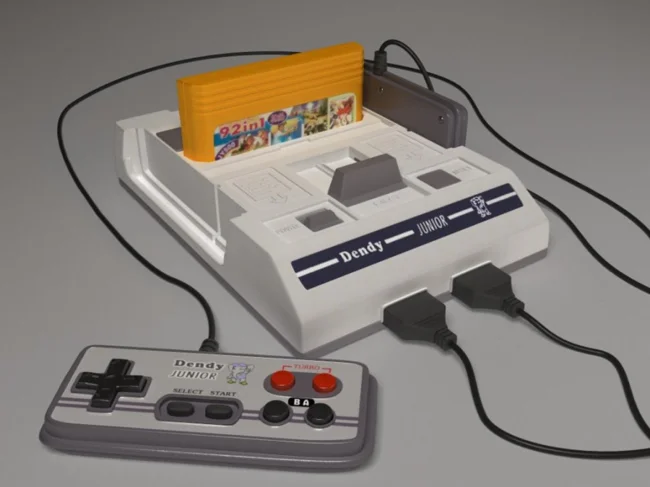
What was it like with games in the USSR and in the 90s?
Before the Dendy game console, video games also existed in the USSR, but they were extremely primitive. You could play a kind of ping-pong on the TV - when one line on the left was a racket, and a dot on the screen was a ball. And similar consoles existed, but they were not in great demand. There was even a Rubin C1-205 TV, which had several games - tennis, squash, mini-football. The TV came with two game controllers. 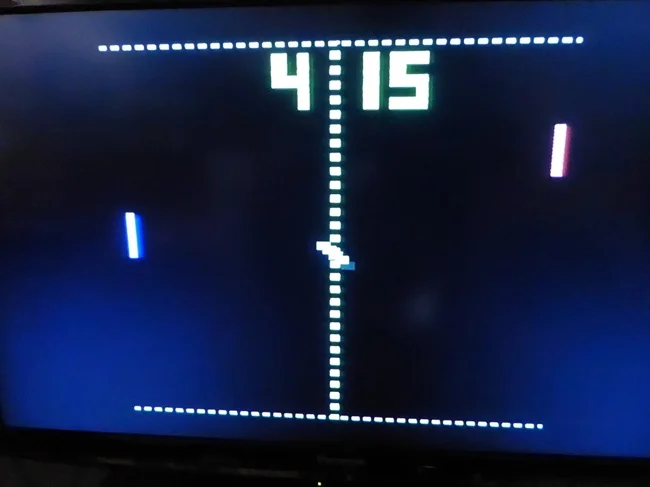
There were various portable consoles (clones of Japanese ones) - "Well, just you wait!", "Jolly Chef", "Ocean Treasures" and many others. But still, these were very primitive games - you couldn't really go wild.
Advanced gamers played on ZX Spectrum clones - a computer in the form of a keyboard connected to a TV and made it possible to play very advanced games of those years. Moreover, on this computer it was possible to program and use various programs. 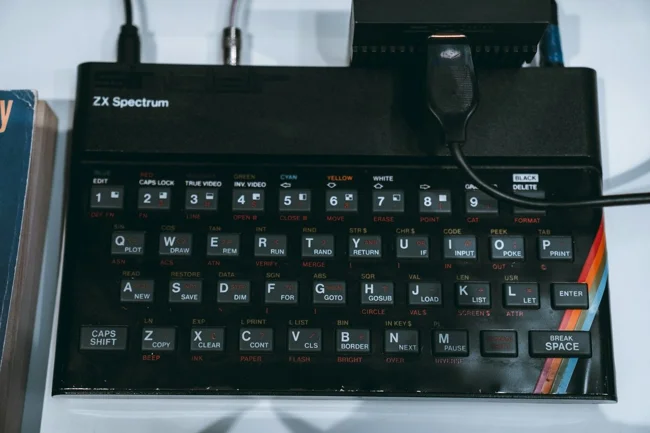
There were also stationary slot machines, but they were usually based on the same ZX Spectrum. I remember in the 90s a corner appeared in the metro lobby, you throw a coin, and the game begins. There was also an operator sitting there, making sure that we, the youth, didn't break the joysticks or pull the coin back out with a thread.
But the real breakthrough and popularization of games happened due to the appearance in the country of 8-bit consoles, which were called "Dendy". Later, 16-bit Sega and PlayStation appeared, but here we will touch on Dendy.
History of Dendy
After the collapse of the USSR in 1991, the market for game consoles remained empty. It was at this point that entrepreneur Viktor Savyuk, who worked for the IT company Steepler, decided to fill this niche by ordering Nintendo Famicom clones from Taiwan. There was no talk of any licensing of consoles - this was pure piracy, but it was 1990, and a lot was allowed. And it was impossible to supply the original consoles to the country - firstly, it would be very expensive, and secondly, Nintendo would not even talk about it.
After much research, TXC Corporation came to an agreement with Taiwanese TXC Corporation - it turns out that this company has long been producing its clone of the console called Micro Genius. This is how the first batch of game consoles was purchased. 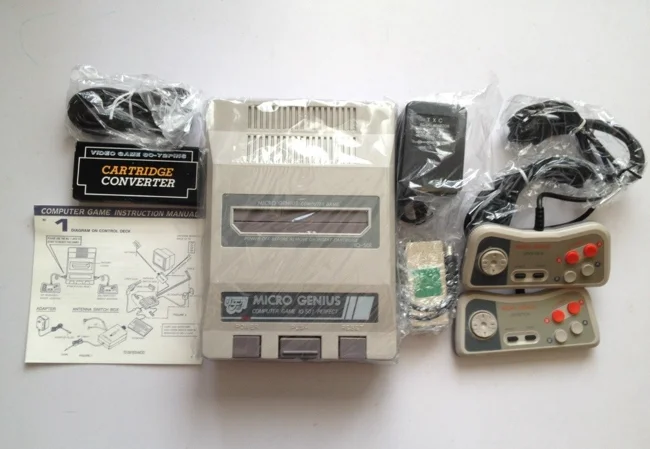
The IT company Steepler immediately understood everything - this would be a real breakthrough, and they could make a lot of money on it. But they did not want to just sell a console called Micro Genius. The reason was quite simple - at that time there was no Internet and no special communication, and other entrepreneurs would also go to Taiwan and buy consoles, and the whole idea would fail. So the company spent a million dollars on developing a brand - Dendy. 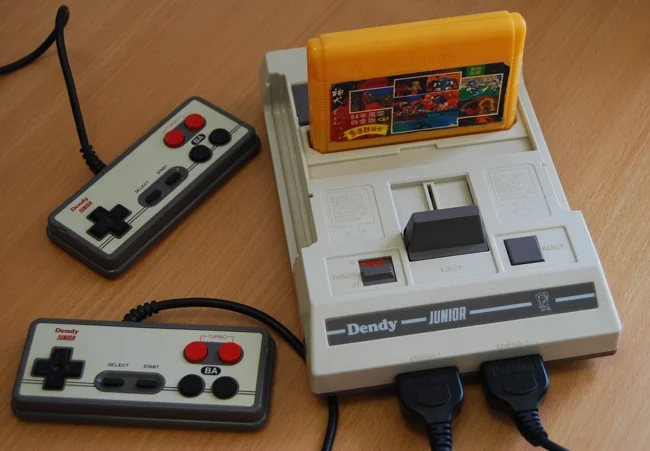
Artist Ivan Maksimov, a famous cartoonist at that time, developed a logo in the form of an elephant for $ 1000. The path to the final version was long, but it turned out to be what many remember. The word "Dendy" is fictitious and comes from the English "dandy" (dandy), where the letter "a" was replaced with "e" - it was convenient to pronounce the word.
And so in 1992, the Dendy Classic, the Micro Genius IQ-501 game console, entered the market, and later the inexpensive Dendy Junior was released.
The Steepler company launched an expensive advertising campaign - the TV commercial "Dendy, Dendy, we all love Dendy!" performed by the group "Neschastny Sluchai" was shown, the magazines "Video-Ass Dendy" and "Dendy Novaya Realnost" appeared, and even the TV show "Dendy - Novaya Realnost" with Sergei Suponev. The consoles were sold through large stores, even "Detsky Mir" took part in this, and by 1994 the company's turnover reached 5 million dollars.
Not only children were interested in the console, but also adults. My friend's father literally played "Mario" and other games all evening, and let his son play only for an hour.
Characteristics of Dendy
The game console was based on the Ricoh 2A03 processor, which was a clone of the original NEC with a clock frequency of about 1.79 MHz. There was only 2 kilobytes of RAM, but it was enough. The PPU video chip provided a resolution of 256x240 pixels (PAL), a color palette of 52 colors, and no more than 16 colors could be on the screen at a time.
The sound path had 5 channels - 2 pulse, triangular wave, noise, DPCM samples. The sound was memorable and still excites nostalgic notes in the minds of gamers. In the cheaper Dendy Junior, the sound was much worse. 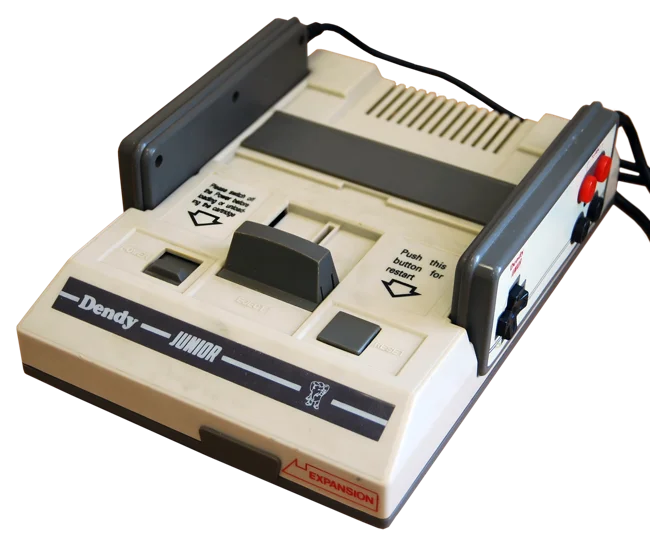
Dendy came with two wired joysticks - a standard 8-button one, as well as a more advanced version with Turbo buttons A and B, which had auto-rotation. Another interesting feature was a light gun. It was used for games where you had to shoot, for example, ducks. The principle of its operation is simple - the barrel had a photocell that tracked a point on the screen: at the moment of the shot, if the photocell captured the point, the player received +1 killed frag. By the way, the light gun only worked on old CRT TVs.
Personally, I had a game console "Subor" (a clone of Famicom) and it came with an interesting device - a wireless module with an antenna for connecting to a TV. It was inserted into the AV jack and transmitted a signal from the console at a distance of about 5 meters. It was possible to tweak the frequency and block the TV broadcast with your signal, which I did, playing around with my parents.
Another interesting fact - Dendy Pro was released, which had wireless controllers, but this model did not become popular. Joysticks in Dendy generally broke very quickly and were consumables with intensive play.
Cartridges and games
Of course, the cartridges were also non-original - due to the relative simplicity of their creation, they were produced in artisanal conditions. As a rule, the memory capacity of 1 cartridge varied from 64 kB to 1 megabyte. 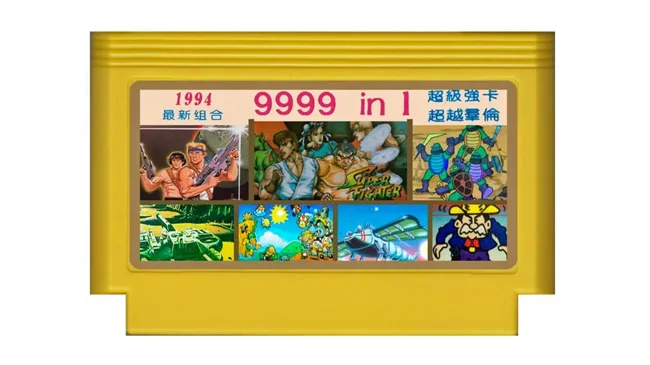
Cartridges for Dendy were sold everywhere, and they were always checked before buying. Often the cartridge did not work or the game on it did not match the sticker. There were also cartridges that said "9999 in 1", and many believed that there really were 9999 games inside. In fact, there were several games with duplicates, where the game began at a different difficulty level. 
Experienced players knew that a good cartridge contains 3-4 games and no more. Sometimes you would come across cartridges with batteries, like the one that powers your computer clock: you could save the gameplay.
Let's remember a few cult games.
Super Mario Bros is probably the very first game that the lucky owners of the console got to know. A cult platformer-fairy tale, where the plumber Mario (or his brother) fights goomba turtles and flying castles to free Princess Peach from Bowser's clutches. 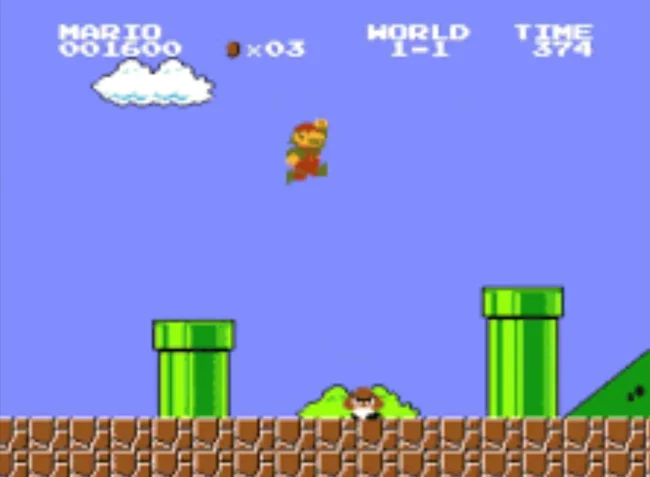
Battle City — the famous "tanks". Two players control tanks, defending the base from enemy vehicles. This game has a unique opportunity to build your own levels from bricks and steel — a dream of a young strategist. We have designed so many maps. 
Contra — Run, shoot and survive in a stream of bullets together with your partner. One of the most favorite games of many.
Duck Hunt — the famous duck killer. The player must kill ducks with a light gun.
Battletoads and Double Dragon — amphibian heroes crushed enemies with head and foot blows, and the legendary level on high-speed scooters entered the history of gaming. Brothers Billy and Jimmy dealt with bandits with brass knuckles and chains, and the final battle on the roof was forever remembered by players. 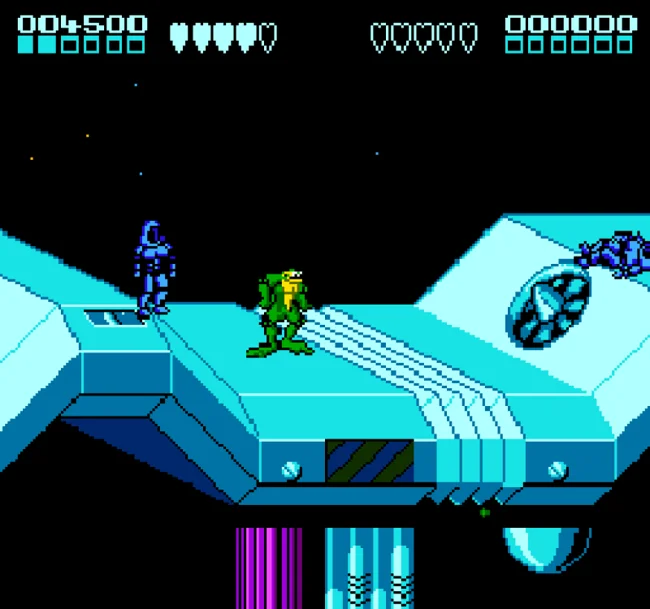
Prince of Persia — the prince fought shadow clones and counted the minutes until he could save the princess. A very difficult game with no way to save: many spent a lot of time completing quests.
Developers included cheat codes in many games, with which you could increase the character's parameters or complete a particular level. It often happened that cheat codes were only discovered when engineers "dug up" the cartridge for subsequent copying.
Compared to modern games, these games had primitive graphics and sound, but many people spent hours completing this or that game.
What's the bottom line?
Dendy is a game console that many remember. Almost everyone had it first. Parents did not let their children play much - it affected their studies, eyesight and "spoiled" the TV picture tube. And many people had only one TV at that time. Later, Sega and PlayStation appeared, computers and games for them improved. But this world will never forget Dendy - in every country there are enthusiasts who do not forget their favorite games. The network is full of communities, and some even create their own cartridges for games.
And what happened to Steepler? By 1998, the company went bankrupt, and all subsequent consoles under the Dendy trademark were already pirated. By the way, there was also a pocket version that supported regular cartridges - Dendy MegaBoy.





















